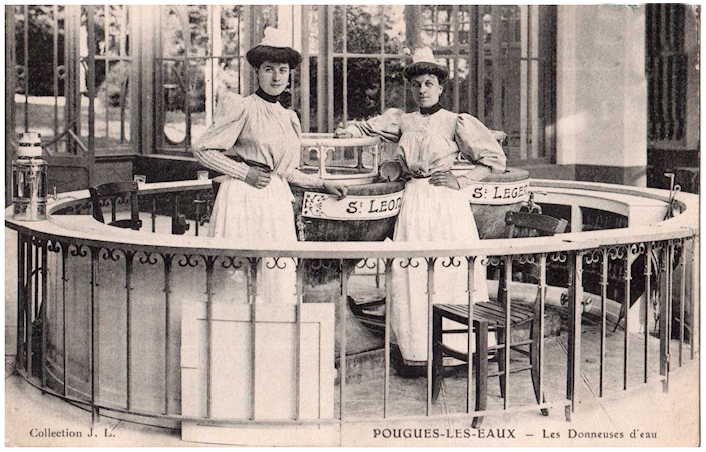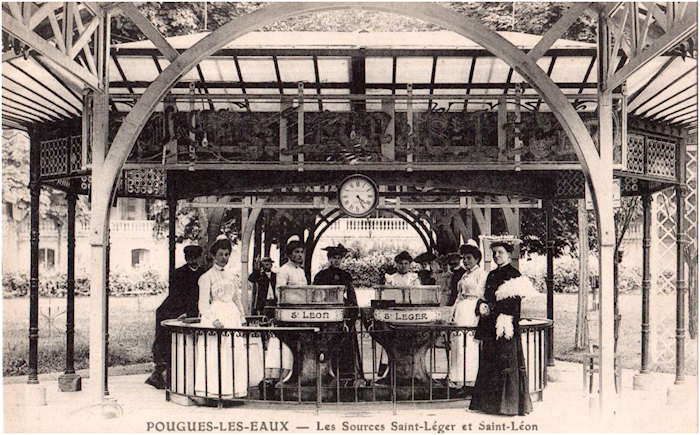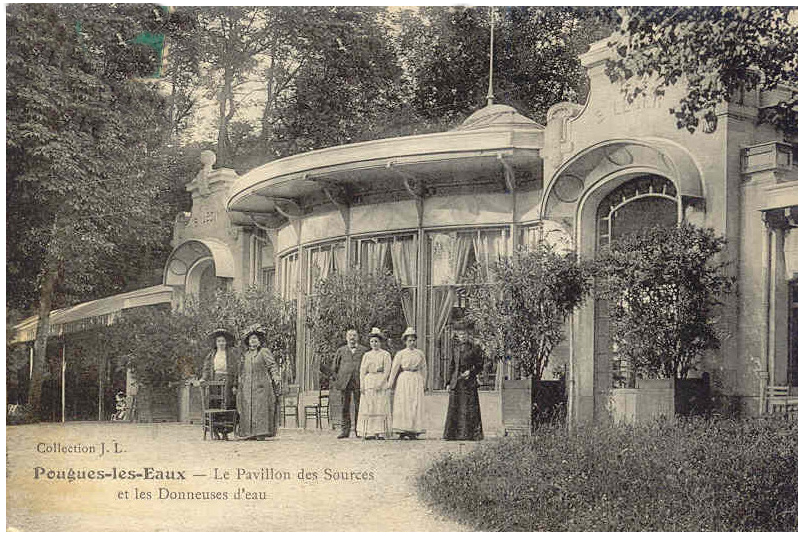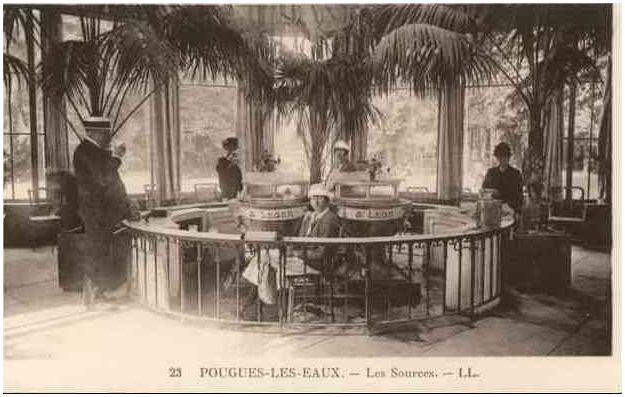At the height of its existence, the French spa town of Pougues les Eaux had 13 wells that were found or drilled for, from the 16th century. This town in the vicinity of the French city Nevers, knew to use the liquid treasure. One source contained calcium bicarbonate, others were carbonated. They bottled the water and sold it on a large scale. In addition, hydrotherapy was available. Between the treatments, there was the possibility of visiting the inevitable casino.
Around 1900, the porch in the open air where the water of the St. Leger and St.Leon sources was delivered by 'les donneuses d'eau', was replaced by a beautifully wrought iron Art Nouveau pavilion with a lot of glass. But the spa industry did not continue. Around 1970, the plug was pulled out and the buildings became more or less extinguished. Demolition was dealt with and what is still in the Thermale Park is not far from it. The pavilion is, a century later, still a jewel, but a threatened one, by an enemy with the name: Rust .
With a bit of bad luck, there comes a time it is just still to to admire at Marc Verat's paintings:



